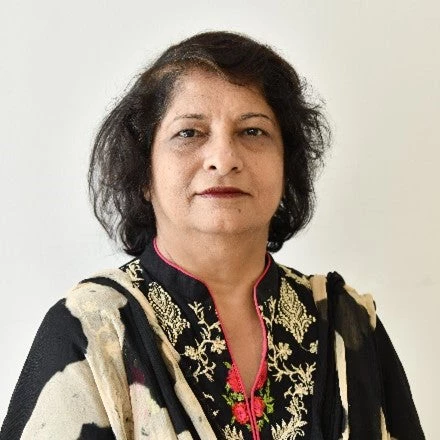 Due to various factors, Bangladesh has become one of the fastest growing markets for motorcycles.
Due to various factors, Bangladesh has become one of the fastest growing markets for motorcycles.
It has become increasingly common to see more and more motorcycles running in the streets of Bangladesh. The two-wheelers comprise three out of every five registered vehicles in the country.
Thanks to a mix of heavy traffic congestion, road infrastructure, emergence of ride-sharing apps and policy leadership in encouraging motorcycle manufacturing in the country, Bangladesh is now one of the fastest growing markets for motorcycles in the world. This access to better mobility has a direct correlation with better chances of economic mobility.
However, the rise in popularity of motorcycles and the growth in mobility has come with a grim consequence. The increase in fatal motorcycle accidents. Recent data shows a 63 percent increase in road fatalities involving motorcycles.
So how can Bangladesh curb the number of deaths and injuries related to motorcycle accidents while still safeguarding access to affordable mobility?
There is a simple solution – wearing standard helmets, which are manufactured following standards which ensure proper protection for the rider.
Head trauma is the leading cause of death for motorcycle riders. With more than three and a half million registered motorcycles plying the roads of Bangladesh, and carrying a pillion rider, that easily puts the number of people at risk of severe head injuries at over seven million people.
Compliance with safety helmet use can significantly reduce the risk of injury by 72% and the probability of death by 39% (World Health Organization, 2015). It provides crucial protection for the head, reducing the risk of severe head injuries, including concussions, skull fractures, and brain trauma.

But there is a catch. Given the comparatively lower per capita income in Bangladesh, helmets manufactured following international standards are often out of reach for many people. Consequently, driven by resource constraints and market forces, cheaper and lower quality helmets have flooded the market.
So, how can Bangladesh chart a pathway for universal access and use of standard helmets to save lives and put an end to avoidable tragic incidents?
Formulate comprehensive laws that meaningfully cover the whole spectrum of motorcycle culture. Insightful and forward-thinking legislation have proved to be powerful instruments to curb deaths and injuries due to motorcycle accidents. For instance, Malaysia has successfully reduced deaths due to motorcycle accidents by 30 percent by introducing and enforcing laws mandating use of standard helmets (Malaysian Institute of Road Safety Research, 2018).
The Road Transport Act 2018 of Bangladesh has had a monumental impact on widespread adoption of helmets. But there is significant scope for improvement. The act enforces the use of ‘proper’ helmets but does not define what it entails. This lack of standardized definition resulted in mass adoption of helmets that are sub-par in protection. Moreover, with electric-bikes not covered in this legislation, there is scope to include a clause with standards and specifications and mandatory use of helmets by e-bikers.
Set and adopt a standard for motorcycle helmets and continuously update it. Standards work best when they are rooted in reality yet driven by a vision. It is essential that all the relevant stakeholders especially the Road Transport Authority, Police, Civil Society, Private sector, and Non-Governmental Organizations are consulted, and their concerns considered by Bangladesh Standards Testing Institute. Understanding the mindset of motorcycle riders is also important. Another crucial consideration is the hot and humid climate of Bangladesh, and design specifications for helmets should reflect this reality.
Ensure adequate enforcement of the laws. Comprehensive legislation, coupled with efficient enforcement, can be a key to adopting standardized helmets. Along with capacity building of traffic police to better ensure motorcycle riders protect themselves with standardized helmets, digital monitoring infrastructure can be set up to guide riders to adhere to the law that is designed to protect them. Digital monitoring is especially useful for highways, where traffic police resources are pretty spread out.
Raise awareness by two-way communication channels. In order to ensure universal adoption of standardized helmets, engaging with motorcycle riders is a must. Policymakers need to listen to motorcycle riders when they highlight affordability as the biggest hindrance and act on it. Regulatory bodies also need to reach out to riders to explain why standardized helmets are important – because people react better to laws when they understand why it is needed.
Ensuring universal access and use of standardized helmets will require a concerted and coordinated effort from the executive and legislative bodies of the government, as well as the private sector and civil society organizations. A roadmap will be required for creating and updating national legal framework regarding certification and use of motorcycle helmets, adopting QR Coded BSTI stickers, education and awareness of riders, local manufacturing, and enforcement of laws. Bangladesh also needs capacity for testing and compliance of the new helmet standards. This would apply to all helmets, imported or locally manufactured, which meets the Bangladesh standard.
Bringing together all the relevant stakeholders is crucial to steer the conversation forward. The World Bank had been having substantive discussions separately with the relevant agencies and it was felt that a workshop needs to be arranged with all relevant agencies and stakeholders, in order to move the agenda to the next level. To that end, BRAC, FIA and the World Bank jointly organized an event earlier this year where the roadmap and next steps were highlighted and agreed upon. This event was very important to finalize the roadmap and carry the conversation forward, that can protect countless lives and avoid inexpressible human tragedy.



Join the Conversation